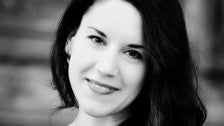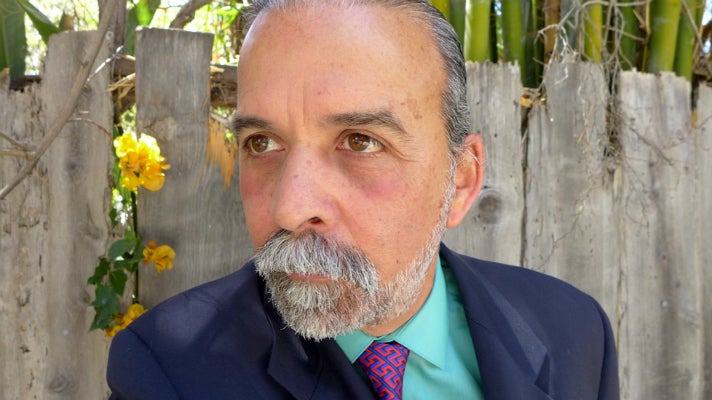“If I hear traffic, it’s like a lullaby,” said Harry Gamboa Jr. with a grin. Dressed in all black, Gamboa never leaves the house without a camera around his neck. An acclaimed artist, author and photographer, Gamboa grew up in East Los Angeles, an area that's bisected by four freeways - hence his affection for the sound of rolling engines.
Early on, Gamboa decided he wanted to be more than just a consumer of culture. His curiosity and ambition helped him break through an initial language barrier: Gamboa didn’t speak English before entering kindergarten. On his first day of school, he was ordered to sit on a chair in front of the class, wearing a hat with the words ‘Spanish’ written on it.
“I went to a tough school and was the shortest, skinniest kid there,” says Gamboa, “but I was rather industrious.” He collected materials from the street, repurposed and sold them. He used the money to buy whatever publications were available. He’d devour newspapers, magazines, photo novellas (a mixture of comic strip and photo story) and comic books. “Post-Cold War comics were filled with theoretical concepts related to physics, social order, heroics and religious belief systems.” These themes reappear in Gamboa’s comprehensive body of work, which includes poetry, essays and photo novellas.
In 1968, Gamboa helped lead the “East L.A. Walkouts” (aka “Chicano Blowouts”) at Garfield Senior High School. Students walked to protest against the substandard treatment of East L.A. public schools and a disproportionate draft of Mexican-American youth to the Vietnam War.
Over time, Garfield High became a place of transformation. Many of the alumni emerged as social leaders, artists, actors and musicians. “People who would probably be considered predetermined to fail became super achievers.” The Grammy Award-winning band, Los Lobos came out of Garfield, and musicians from a neighboring high school formed Cannibal & the Headhunters and went on to tour with The Beatles.
“The social pressure and social heat you encounter has potential to destroy, but it also has the potential to create a diamond. So if one can approach it almost mathematically, you can create yourself in the image of a diamond, you will shine in the distance and can cut through anything. I am a very old diamond now." Gamboa shrugs and laughs.
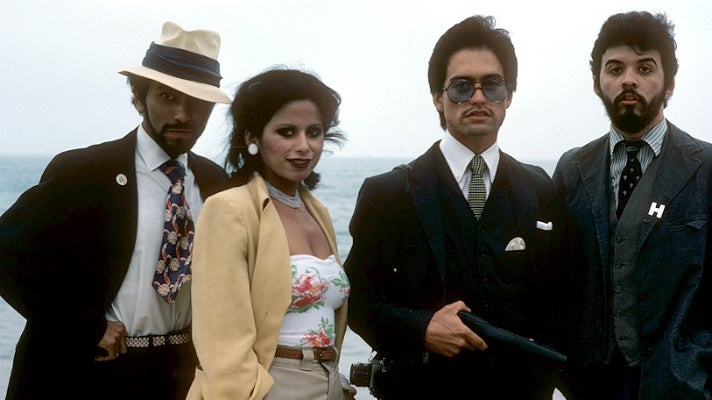
Together with Garfield High classmates Willie Herrón III, Patssi Valdez and Gronk, Gamboa co-founded the conceptual performance art group Asco (Spanish for “nausea”), where humor and satire often took center stage. “We wanted to start something new and different. It was all about expelling self-loathing, and the affirmation of self-love.”
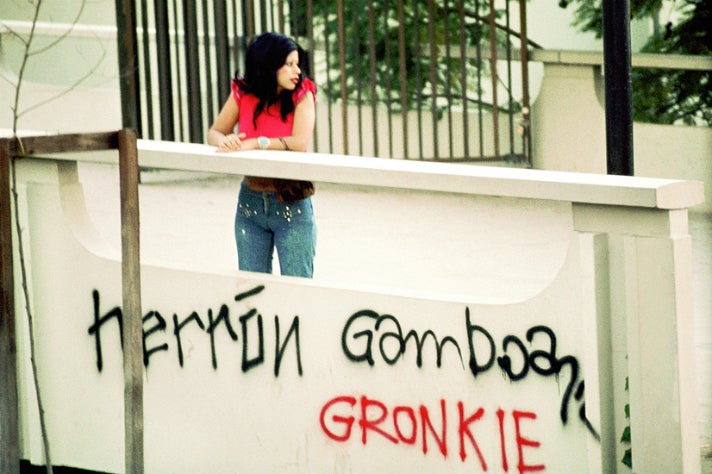
Gamboa started the group off by spray-painting their names on a wall of the Los Angeles County Museum of Art (LACMA) in an act of ‘aesthetic resistance’ against the underrepresentation of Chicano artists in cultural institutions at the time. Nearly 40 years later, Spray Paint LACMA was shown in ASCO: Elite of the Obscure, a retrospective at LACMA that was part of Pacific Standard Time: Art in Los Angeles 1945-1980, the landmark 2011 initiative led by the Getty that featured arts institutions across Southern California.
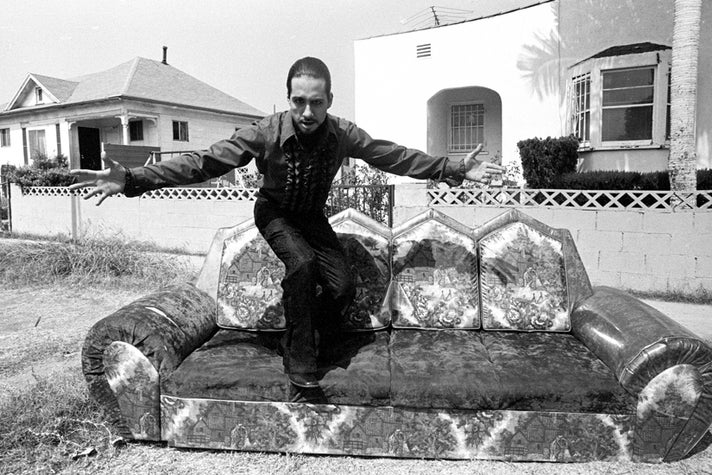
Gamboa’s art has been displayed in Los Angeles and around the world, including the Museum of Contemporary Art in Los Angeles, the Museum of Latin American Art in Long Beach, the Centre Pompidou in Paris and the Smithsonian American Museum in Washington, D.C. A special career highlight came in 2010: then Mayor Antonio Villaraigosa handed Gamboa the Latino Heritage Award on behalf of Asco (1972 - '87).
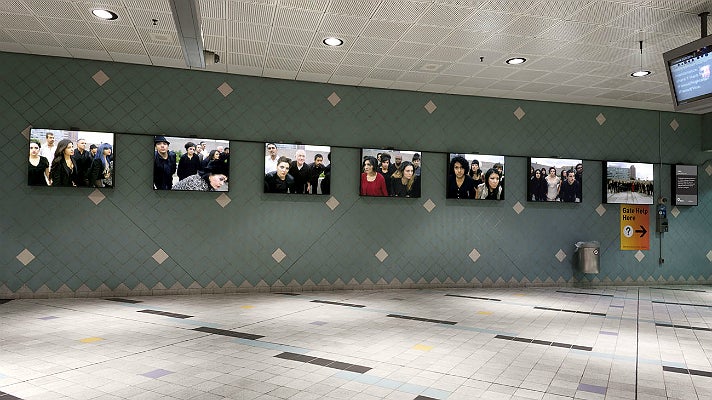
Metro Rail passengers can see Vidrio, a Metro-sponsored photo installation, at the Hollywood/Highland Station of the Red Line. The photographs document performers in an implied visual opera. The performers attempt to engage the viewer by presenting a range of characters cast within the urban environment of Downtown Los Angeles.
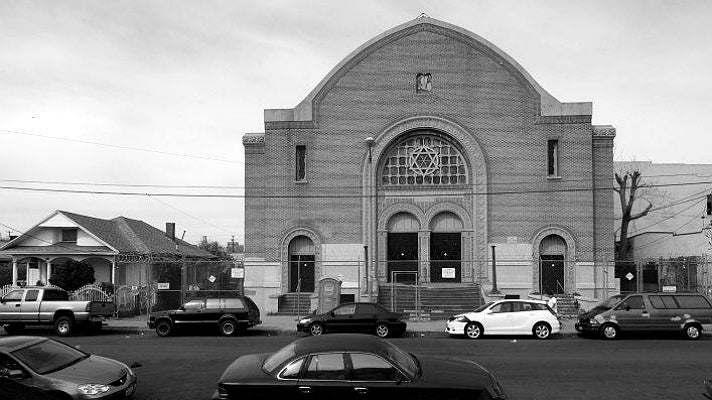
While he continues to be an active player in the international arts community, Gamboa is also an educator. He is on the faculty at the California Institute of the Arts (CalArts), where he teaches a class called LA Urbanscape: Image, Words & Acts. Every Friday, he meets his students at a different location and takes them on a tour. Many of the sites are a part of Gamboa’s own L.A. story.
One such site, for example, is on the corner of Soto and 1st Street, in the vibrant, multicultural Boyle Heights neighborhood of East L.A. Not far from a Metro Gold Line train stop, they visit an old, little newspaper stand. “It is one of the only places where the Mexico City Daily is sold and you can still buy photo novellas,” explains Gamboa. Next on the agenda is the Breed Street Shul, a landmark Jewish Orthodox synagogue that's listed in the National Register of Historic Places. Here, the local Latino and Jewish communities intermingled on a regular basis.
“Some of my musician friends and I used to go to Canter’s, which was located right there on Brooklyn and Soto.” The famous Jewish deli, popular with visitors and legendary movie stars alike, opened in Boyle Heights in 1931 and later moved to its current location in the Fairfax District. Gamboa and his students grab a bite at King Taco, located across the street from the former Canter’s location. “I tell my students how that started off as a small taquería and ended up as a million-dollar establishment.”
“A lot of the sites involve something that has been in movies, because Hollywood is such a big part of Los Angeles.” Chance encounters with people on the streets, and tying in their L.A. stories becomes part of the experience. “By the end of the class period, my students wonder where I get all the actors. But they’re real people,” Gamboa notes with a smile. When he has visitors in town, he often does the same – they get on a bus, walk around neighborhoods and discover history that way. Gamboa likes to immerse himself in street culture, a point of inspiration for many other artists.
What does Gamboa love most about his hometown today? “Something positive I see about Los Angeles is the acceptance of over 100 languages in innumerable cultures coexisting with one another. It’s one of the greatest successes of L.A. There’s an acceptance here and we’re all part of it.”

Gamboa runs the performance collective Virtual Vérité, a group of intellectuals, students and friends who come together to create impromptu, site-specific performances around L.A. A collection of Gamboa’s essays and photo novellas have been published and are used in university curricula around the country.
For more information on Harry Gamboa Jr., visit harrygamboajr.wordpress.com.
Led by the Getty, Pacific Standard Time LA / LA will launch in September 2017 and explore Latin American and Latino art in dialogue with Los Angeles. For more information, visit www.pacificstandardtime.org.


